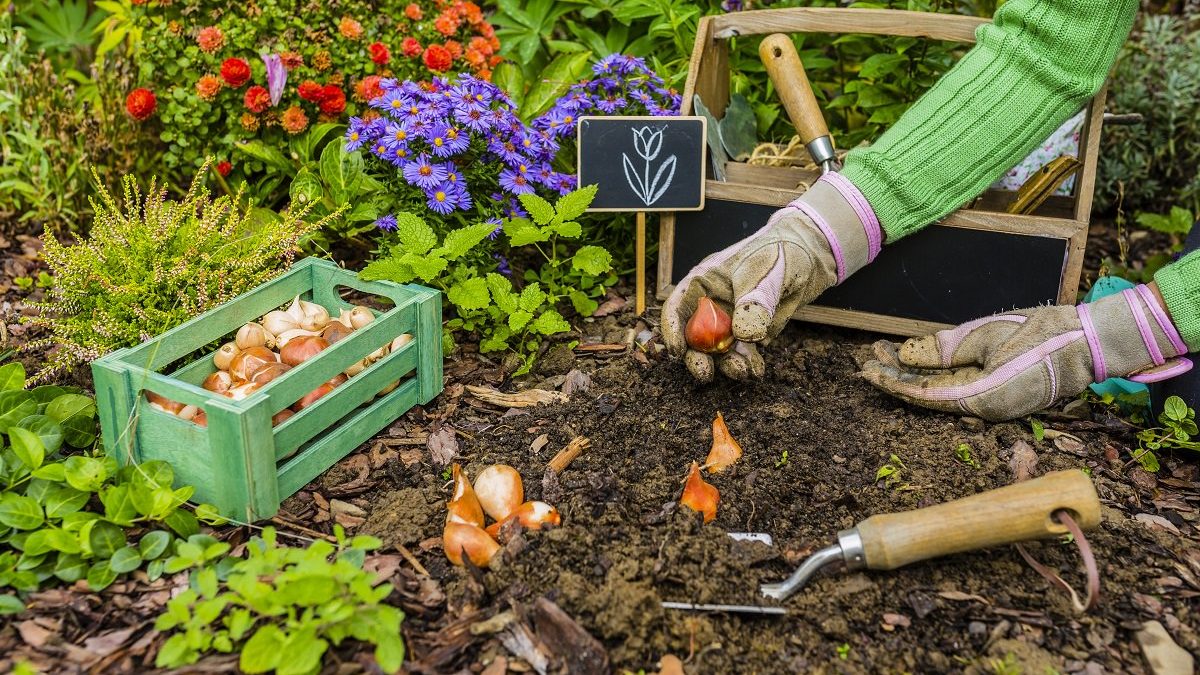
Start Thinking About Your Spring Garden Now

The common practice of cleaning gardens in fall and planting them in spring has more to do with psychology than sound horticultural practice.
Many common fall garden chores do not benefit plants. However, you can do a lot in the fall to prepare your garden for the best start in spring. For a more sustainable garden, try flipping the script on the fall “to-do” list.
Don’t Clean Up Until Spring
You might already know that there is no reason to put the vegetable garden to bed in the fall. But fall clean-up doesn’t really do your ornamental landscape any favors, either.
The tidy look of a cleaned-up garden may have aesthetic appeal, but it breaks nature’s cycles. The hollow stems of perennials that have died back and the leaf litter on the ground are both critical winter habitats for wild bees, butterflies, and other insects. All of these bugs, in turn, provide the food that keeps overwintering birds alive through the coldest part of winter.
Wait until after the last frost when new growth starts to emerge in spring before you clean up the garden and you’ll give natural communities a better chance of survival.
Do Plant Perennials in Fall
Everyone knows that peonies must be planted in the fall. But many people don’t realize that peonies aren’t different from other perennials, they are just less tolerant.
Nearly all woody plants and perennials do better when they are planted in the fall after temperatures begin to drop but before the first frost. The tops of plants will go dormant or even die back when frost hits. But the roots can continue to grow under the frost line all winter.
By the time the plant is ready to leaf out in spring, the root system is already established. Fall is also the time to plant garlic and spring-flowering bulbs.
Do Hardscaping Projects
Construction projects are messy, and let’s face it, contractors are not known for carefully avoiding damage to existing plants. If you plan on a new garden next year, whether in the ground or a raised bed, preparing the beds is best accomplished in the fall.
By doing the work in the fall, you reduce the risk of damaging emerging plants and you might find it’s easier getting on contractors’ schedules. Also, if you build those raised beds or lay new pavers now, you’ll have more time for starting seeds in the spring.
Mulch and Protect
Mulching with organic material like wood chips in late fall not only contributes to the habitat already partly established through leaf litter, it helps protect all those newly planted roots. Winter mulch should be applied after plants have gone dormant.
Depending on your local climate, you might still need to bring potted plants and tender perennials inside for the winter. And the old trip of wrapping plants in burlap or covering them in old sheets is still a good way to protect the tops of plants from storms and unusually low temperatures. But in many cases, especially in milder climates, mulch will be all the protection that plants need.
This article was first published on September 5, 2019.